Biography
Michelle Puentes is a sophomore student pursing a double degree in Art BA and Psychology with an Italian Minor in Florida International University. Her passions encompass analyzing classical art, studying about the human mind, learning about the Italian culture and teaching children in her church. She aspires to become an art therapist for children in hospitals or with emotional struggles, and wants to travel to many countries to explore the lifestyle of others.

GEOGRAPHY
Palmetto Bay is a village-like suburb in Miami-Dade County located west across Biscayne Bay , and neighboring Pinecrest and Cutler Bay. The suburb has a total area of 8.8 square miles and has an altitude of 39 feet. The climate around this area is mostly compromised of a wet tropical savanna climate .

The urban landscape of Palmetto Bay is compromised of several plazas, shops, businesses and restaurants along Dixie Highway, with the east side of Palmetto Bay being mostly parks, homes and schools. Schools are Coral Reef Elementary School, Palmetto Bay Academy and Westminister Christian School.
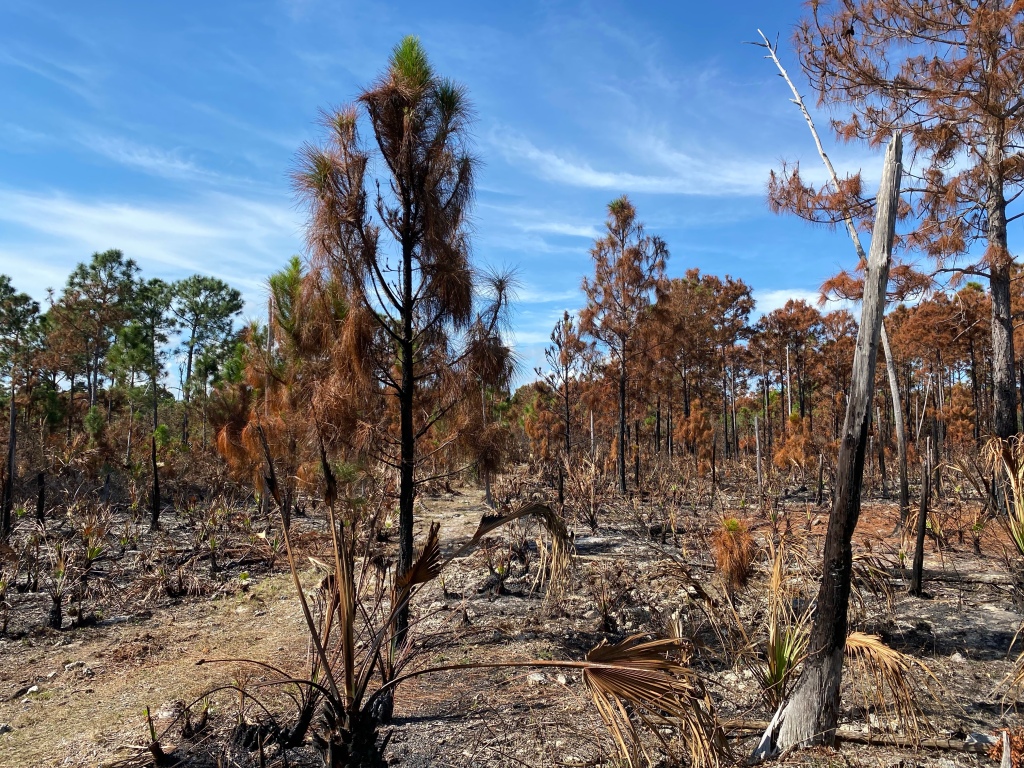
The natural landscape of this city, however, is completely different. A small portion of the raw natural landscape of Miami is located at the Deering Estate, where Charles Deering was one of the few settlers during Miami’s development of 1920s that preserved the nature. Part of the Deering Estate, located in Palmetto Bay, sits on top of the Miami Rock Ridge, which is a sedimentary ridge that is up to 25 feet above sea level. Most of the natural landscape of Palmetto Bay consists of mangrove forests, tropical hardwood hammocks, pine Rocklands, salt marshes and more. Overall, the natural landscape is stunning with a wide open view of Biscayne Bay by the shore and lush green tropical surrounding the untouched areas of Palmetto Bay.
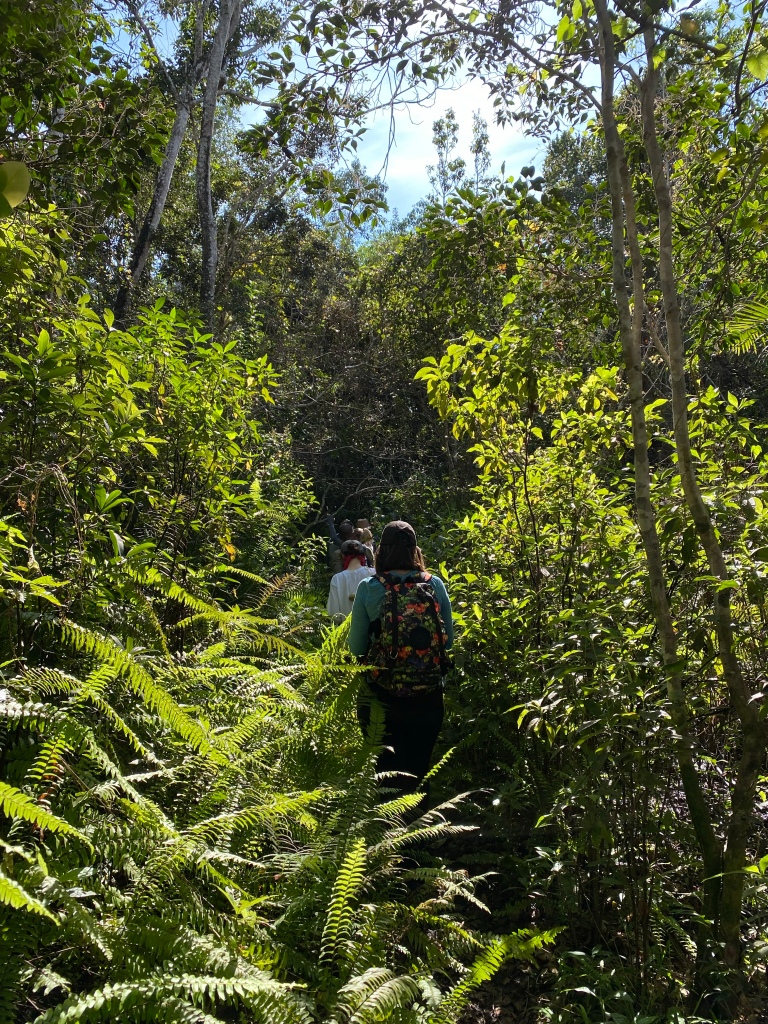
HISTORY
The land of Palmetto Bay had been inhabited by Paleo-Indians and Tequestas in the beginning dating around 10,000 years ago. The Tequestas were one of the first tribes in South Florida settling around Miami area. They lived along the mouth of the Miami River and flourished for many years until the English came. Since the Tequesta never surrendered, they were able to maintain a mutual relationship with the Spanish, but when the English began to conquer and push south, the Tequesta began to move towards the everglades and even Cuba. The Old Cuter Fossil Site in the Deering Estate property has fossilized remains including mammoths and dire wolves, seen in the solution holes. A untouched burial mound of the Tequestas sits as well there, which is one of the two only unearthed Tequesta burial sites in the world. It believes to hold 12 to 18 Native Americans, with a 600 year old oak tree growing above, seeming as a representation of the Tequesta spirit flourishing within the roots of the majestic tree.
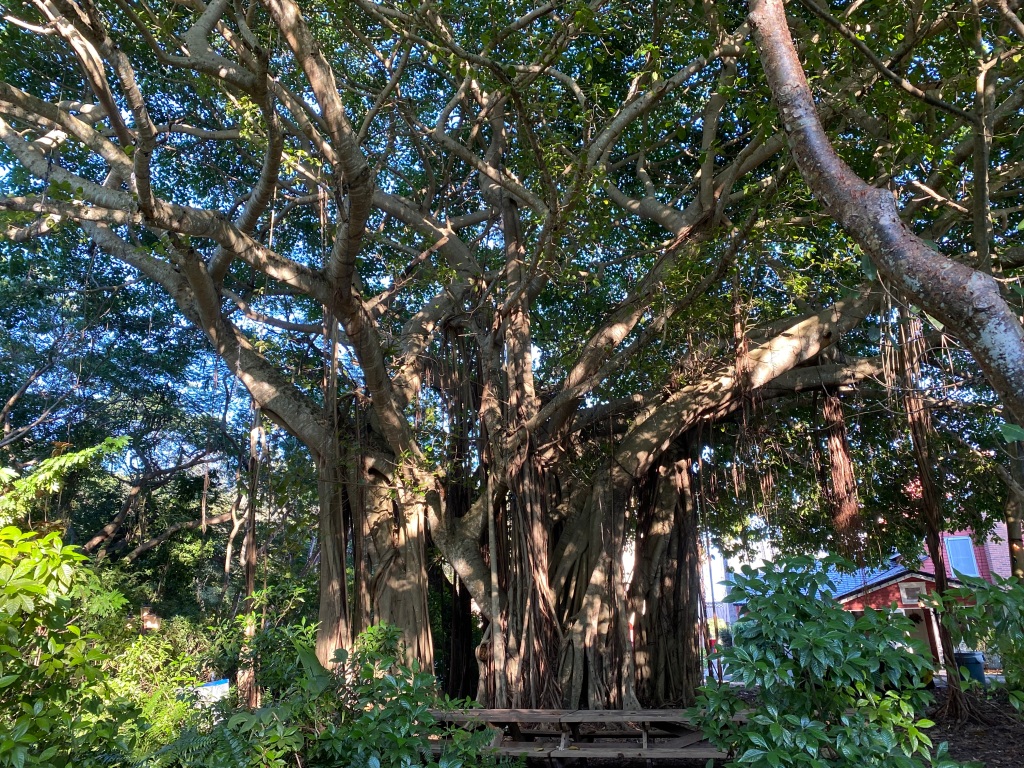
In the more recent past centuries, around 1813, the land of Pinecrest, Palmetto Bay, and the Falls were granted to Dr. Perrine, who had the intentions of creating an agricultural colony. During his years, Dr. Perrine studied tropical plants in order to pursue his vision and cultivate them in that area, but unfortunately in 1840, he was killed in an Indian attack. After his death, squatters began to settle in the same soils Dr. Perrine had claimed, but instead of following his vision, they chose traditional farming over new plant introduction. In 1897, two settlers, Francis and John Earhart owned 2,000 acres of the 3 suburban areas and established a small farming community called “Franjo”. The Franjo Road takes its name from this small community, which led to them. In 1883, Dr. William Cutler settled and bought 600 areas of land. Building the Town of Cutler, it was located between Old Cutler Road and SW 168 street, which grew quickly with vegetable and fruit production. However, during Henry Flager’s development of the railroad, the Town of Cutler was bypassed by several miles and cut short of its potential growth. It wasn’t until almost a decade later, Charles Deering bought the land in the slow city of Cutler and brought life once again. Charles Deering was the half brother of James Deering, who built Vizcaya, and both built Mediterranean style mansions on the edge of Biscayne Bay. Charles Deering preserved much of the land and maintained the former Indian Hunting grounds, while also planting Royal Palms near the water. He became a avid naturalist and preservationist, allowing the US Department of Culture to establish an experimental station on several acres of his property. However, as much as his glory is recognized, it was also during a period of intense racial segregation, where most construction workers of the Deering Estate were African American or Afro Bahamian. Under horrible working conditions, the building of the Deering Estate resulted in four deaths and five injuries, which is still not recognized today by the park or city of Palmetto Bay. The Richmond Inn at the Estate today is one of the last surviving structures of the town of Cutler, and is listed on the National Register of Historic Places.
The creation of the municipality of Palmetto Bay was a tough one during the past decades. On November 6, 1995, the alliance of Palmetto South Homeowners petitioned Miami Dade County to incorporate the village. Being denied by the Boundaries Commission, the County’s Planning Advisory board approved. However, the Board of County Commissioners deferred the petition in 1996 and residents and attorneys filed a lawsuit against this. Finally on May 20, 2000, the Board of County Commissioners approved the creation of Palmetto Bay Municipal Advisory committee. It was not until September 10, 2002, that voters approved the municipal charter and Palmetto Bay finally became the 33rd municipality in Miami Dade.

DEMOGRAPHICS
Palmetto Bay is currently home to over 24,000 residents, governed under a five member Village council. According the the United States Census, its estimated population as of 2019 is 24,523, with a median age of 41.5 years. 54% are between the age of 18-65, 14.8% being 65 and older, and 31.2 % under 18. The demographics of sex is roughly split equally, females accounting for 50.3% of the population and males 40.7%. The race and ethnicity is prominently white and hispanic, accounting for 86% altogether. 46.6% identify as Hispanic or Latino, 42.1% as white, 3.7% as black, 3.7% as Asian and .1% as American Indian or Alaska native. Around 32% of the population are foreign born, most likely coming from Latin American countries. Compared to other areas around Miami Dade County, the income in Palmetto Bay proves to be an affluent neighborhood, with the median household income being $123,477 and a low poverty level at 5.7%, compared to Hialeah Gardens having a median household income of $53,423 and 12.5% poverty level. Additionally, the median property value is half a million, at $562,300. The education levels are very high as well, having 94.8% of people over the age of 25 having completed high school and 58.5% having completed a bachelors degree.
INTERVIEW
Patricia Christine Garcia
How long have you lived in Palmetto Bay and what do you think of this neighborhood?
I have lived here for 10 years.. since 2011. It is a pretty safe and well maintained neighborhood in general, where potholes are taken care of. It is generally filled with nice individuals, like retired couples or families of upper middle class. There is not many singles living here, it is mostly a community where families live. But the prices have been skyrocketing here over the past years.
What do you like to do around here?
I have gone biking here around because places are not so distanced from each other, so it is easy to get around. I have also gone kayaking at the Deering Estate and fishing at Deering Pointe, which is a lot of fun. I have gone to a farmers market near coral reef park which was an interesting experience.
How did your family arrive to Palmetto Bay?
My parents are from Cuban descent, so both of them came to the United States when they were children. We used to live in Cutler Bridge, but it was a very unsafe neighborhood so we decided to move. We chose Palmetto Bay because it was close to my elementary school so it worked out.
What is your favorite aspect about this neighborhood?
What I like most about this neighborhood is the overall safety and security here. It is a place where I generally feel safe, not like before where I used to live. The people here are warm and friendly, so it adds to the feeling of home where you feel safe and sound. Overall, I think I would stay here to live longer with my family.

LANDMARKS
OLD CUTLER ROAD

The Old Cutler Road is a very important landmark here in Palmetto Bay. It crosses through Coral Gables, going fully into Pinecrest, Palmetto Bay and Cutler Bay. Originally belonging to the name of the former town of Cutler, it was a town founded by William Fuzzard who settled around the late 1800s. In 1883, Fuzzard and other residents cut a path north and east through the pine rocklands and hardwood hammocks, following towards the village of Coconut Grove. It was the first overland route connecting Coconut Grove and Curler, and was declared a public road in 1895. It was known as Cutler road, then Ingraham Highway and now known today as Old Cutler Road. In 1916, a concrete bridge was installed over Snapper Creek and led to Florida’s first state park : Royal Palm State Park. It was declared a State Historical Highway in 1974 by the Florida Legislature. Deering had also petitioned to the county to allow him to divert the road around his estate, in exchange for a public dock, which was granted to him.
THALATTA ESTATE

Another Estate Park located in Palmetto Bay, Thalatta Estate is a two story Mediterranean Revival home that was built and designed by the Connett family in the 19th century. A venue that today holds wedding ceremonies and receptions both inside and outdoor, it offers a beautiful view of Biscayne Bay with beautiful gardens and an outdoor courtyard. Built in the style of 1920’s, it contains elements of decorative Cuban tile floors and carved wood entry doors inside the house, with red clay tiled roof, and round arched openings. It was acquired by the Village of Palmetto Bay in 20o5 in order to preserve as a landmark for Miami Dade County.
CHINESE BRIDGE
Originally known part of “Old Cutler Road”, the Chinese Bridge was ordered to be constructed by Charles Deering as a bridge to cross Cutler Creek and his home. Deering relocated the access way of Cutler Road into the natural areas of his property and designed it in a Chinese theme as a commemoration of his U.S Naval voyages to Asia. Water from the Cutler Drain Canal C-100A flows under the bridge, due to a coastal wetlands restoration project. A resident who has lived in Palmetto Bay since his teens states the Chinese Bridge as a “pretty little bridge in the middle of nowhere, forgotten and swallowed by nature”, due to its dark location surrounded by mangroves, large trees and thick vegetation.
GREEN
Deering Estate
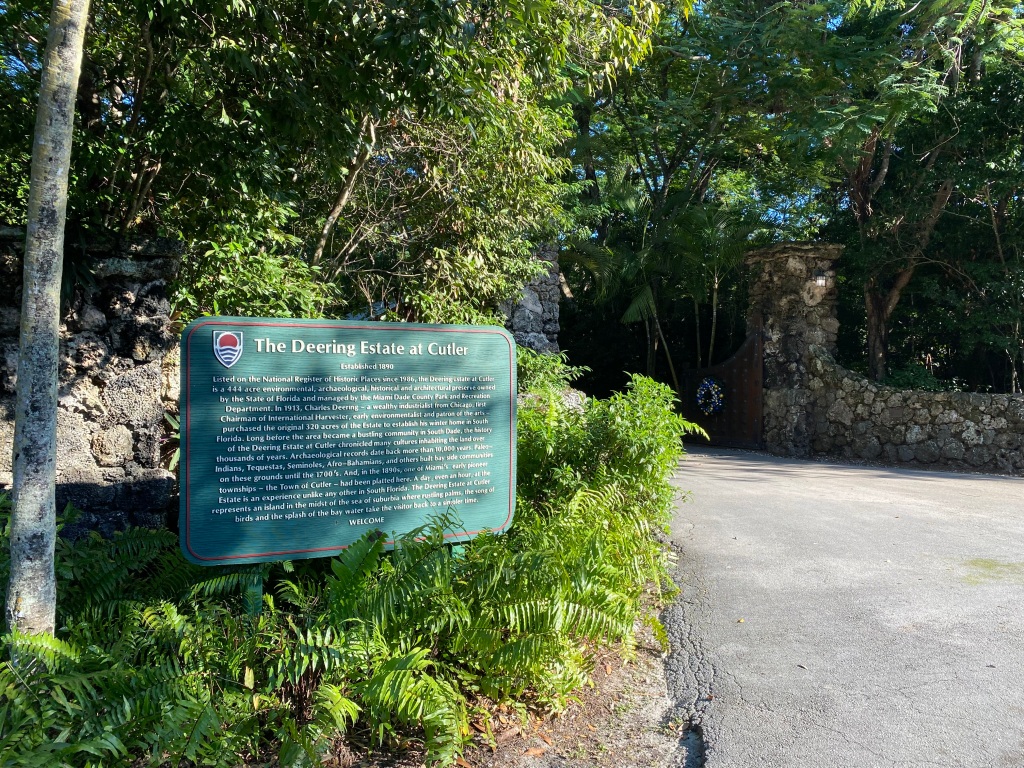
The Deering Estate is one of the most important green spaces and landmarks of Palmetto Bay. Having been built by early preservationist and environmentalist Charles Deering, it was designed to keep the nature and history of Southern Florida intact and in its original state as the Tequestas lived in. The biodiversity in this park itself is amazing, with seagrass beds, coastal dunes, salt marshes, mangrove forests, tropical hardwood hammocks, and pine rocklands being part of the diverse ecosystem. It includes a variety of wildlife such as squirrels, snakes, birds, gray foxes and butterflies with rare species being recovered. Additionally, it is popular as a location for a wedding venue and beautiful ambience to host signature events, programs, hiking tours and classes.
CORAL REEF PARK

Located in SW 152nd Street of Palmetto Bay, this beautiful park offers beach volley ball, tennis, basketball, baseball, exercise trail, and a large playground for kids and adults to enjoy. More than 50 acres big, it offers pine land preserve areas and a beautiful streaming river that gives a sense an ambience of peacefulness. The park itself is very beautiful with a large space and trail to walk on, making it a green space to enjoy an active lifestyle.
PALMETTO BAY PARK
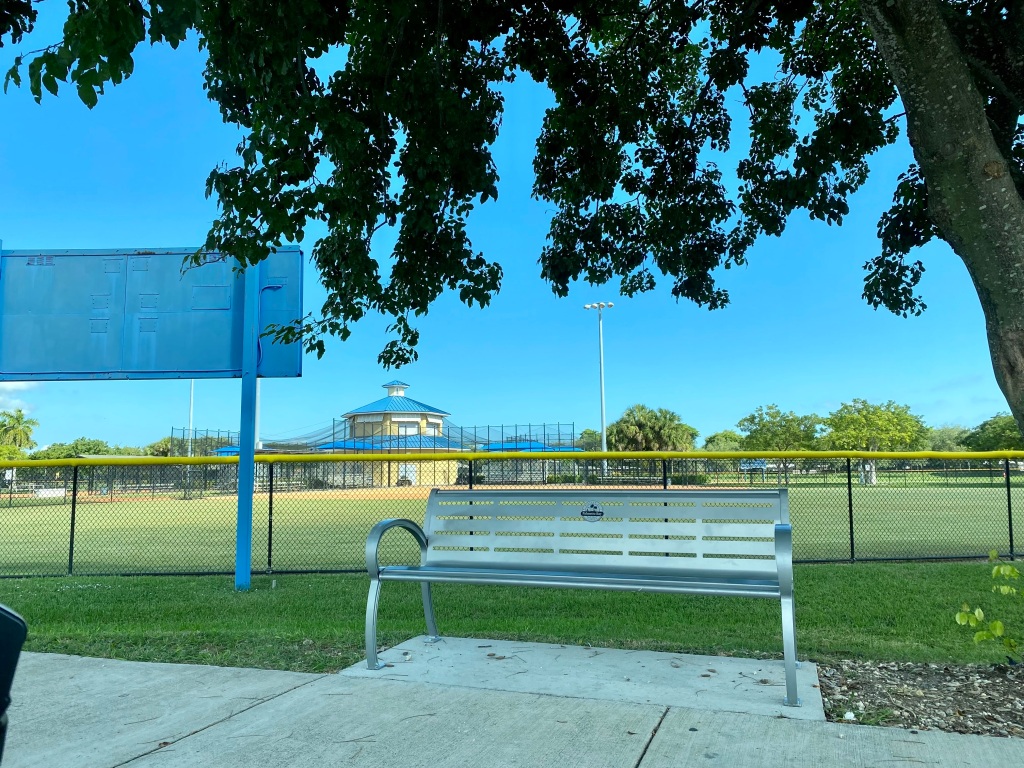
A park quite hidden between the streets, it is a popular park of Palmetto Bay located near US-1. This park formerly was 5 acres, but after the Village incorporation, it was expanded to a 25 acre park facility. It includes basketball courts, six softball fields, large playgrounds , a skate park and an extensive greenspace. It also has a two story concession and observation deck at the center near the softball field. It is a nice park to walk around and enjoy for a view, but not as much as the other ones.
FOOD
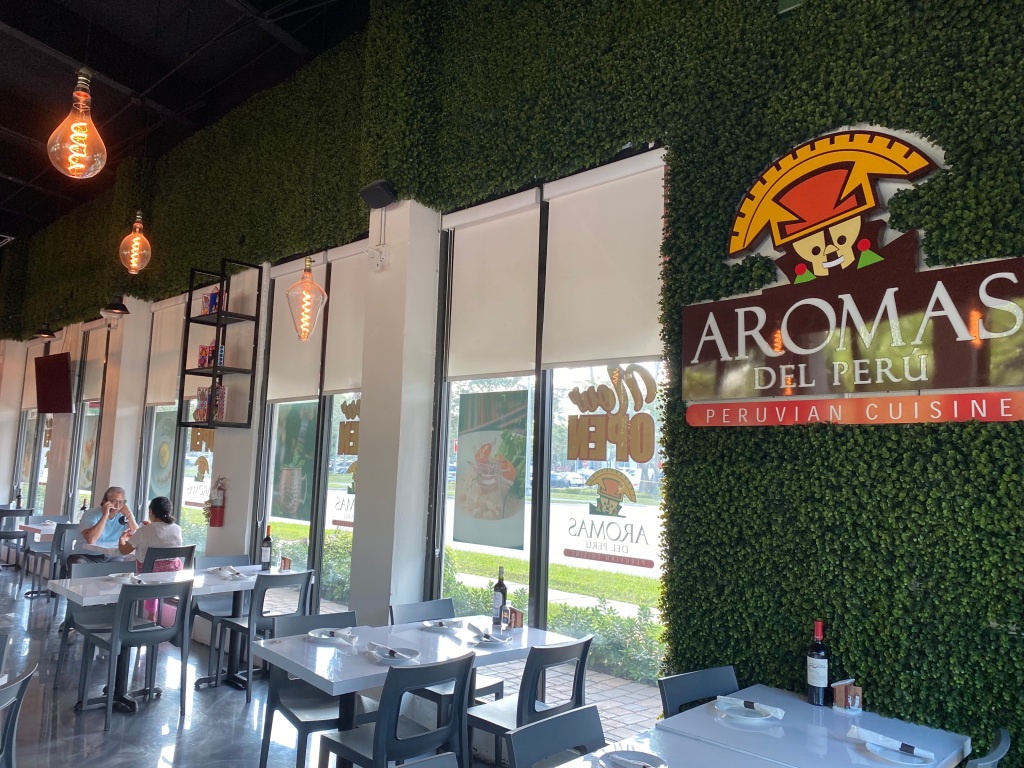
Aromas del Peru
A Peruvian Cuisine restaurant, it serves authentic Peruvian food for those who enjoy a nice relaxed ambience along the streets of Palmetto Bay. They also serve pastas and sushi, which adds to the diversity of their menu where everyone can enjoy. The cost of their menu is averagely expensive ranging from $15-$40 a plate. Overall, its a modern ambience restaurant to enjoy on a date or with friends while visiting Palmetto Bay.

Walter’s Coffee Shop
A family owned restaurant since 1965, Walter’s Coffee Shop is a perfect dine in to stop by for some classic American breakfast and lunch. The menu consists of eggs and bacon or french toast breakfasts for anyone to feed the morning hunger. For lunch, milkshakes and burgers are offered to enjoy midday, and for dinner N.Y steak strips or different fish platters are offered for the night. Their prices are average, ranging from $10-$20 a plate. Overall, its a great place for a family to enjoy at anytime of the day.

Daily Bread
A Greek/ Middle Eastern market and restaurant, this place offers delicious meals and products coming from the Mediterranean. They offer typical platters such as Falafel, Kibbie, Gyro,Stuffed Cabage and more with a side of pita bread that comes and delicious homemade sauces. They also have delicious desserts such as Baklava, Crescent Cookie, Nut Roll and alot more delicious treats! Their prices are inexpensive, ranging from $8-$15 a platter. Additionally, they have a market with a wide variety of products from the Middle East and restaurant made pita and dips.
BUSINESSES
Palmetto Bay Farmer’s Market

An open air market at Coral Reef Park, it is a special market with over 30 booths where vendors come and sell their handmade jewelry, homemade soaps, local honey, special herbs & plants and more! There are also delicious food stands where you can eat Mediterranean humus, smoked BBQ, and ceviche. Lots of choices to choose from, it can help support small local businesses to keep their business growing. It is open every Saturday from 9am to 3pm!
Miami Reptile Co.

Miami Reptile Co is a reptile rescue friendly store where owners of snakes,lizards or more can come and shop for food, reptile products or new pets. They currently have exotic reptiles for sale, such as the Chinese golden thread turtle or the Ghi fire spider. They also include a line of feeders, such as rodents, worms and insects available for these vile creatures. Additionally, they also have a Reptile Day care where they can take care of your lizard, snake or tortoise while you are away on vacation or a trip for a small price of $3 a day. Overall, it is a great pet store if your looking for something new and exotic to have as an animal.
Bella Vita Salon and Spa
This full service hair salon has been opened since 2001 with an upstanding commitment to have client’s experience the most tranquil, upscale ambience in the spa. Complimentary wine, tea or coffee is always available at the guests hand, treating their guests as royalty. They offer skin, hair and nail services, such as acrylics, facials and haircuts in order to beautify the customers features. Customer reviews are always filled with how friendly the staff is and how great their services are. They are open Monday through Saturdays, and closed on Sundays.
TRANSPORTATION
Palmetto Bay has quite a few helpful modes of transportation which allows it to travel easy between the village. They have local bus services and Freebee, which can save the environment on extra gas from the cars and allows for people to get free transportation. Freebee was introduced in July 2019, where free gases vehicles can pick you up and take you anywhere within Palmetto Bay at zero cost. There are also now two “Freebee” shuttle buses that will take riders from Palmetto Bay park to Dadeland South metro-rail station, which is another great mode of transportation to get through most of Miami without the traffic hassle.
Palmetto Bay also has the I-Bus, which is a intra-Village bus service that is designed to increase the number of destinations through a scheduled route. They all come equipped with air condition, wheel chair accessibliliy and bike racks so anyone can transport easily within.Additionally, they are free, funded by the transportation surtax of Miami Dade County. They also connect with the Miami Dade Transit routes, which make it once again easy to travel into Miami outside of Palmetto Bay.
Another notable mode of transportation here, as noted by a resident who I interviewed, is golf carts. Golf carts are popular used here as a mode of transportation around the neighborhoods, especially around the evenings, to save on gas and enjoy the fresh nearby breeze of Biscayne Bay. Often families use golf carts to travel around the village.
SUMMARY
Since I’ve been coming here to this neighborhood often due to my internship at the Deering Estate, this place feels like a second home to me. Being able to take part of several hikes at the Deering Estate along with Professor John Bailly, I have learned an incredible amount of the history of Palmetto Bay and Miami in general. This neighborhood has a very peaceful and naturalistic environment, where the roads are often quiet near homes and there are many green spaces to enjoy of, which pertains to its nickname as the “Village of Parks”. Of course, since it is an affluent, wealthy neighborhood, there is a lot of sense of safeness and security, which unfortunately is not the case for other neighborhoods in Miami Dade. Because it is a very expensive place to live to, it is not accessible for everyone else to live, including low or middle class people.
An important aspect to note about this neighborhood that does not work, is the single lane roads along Old Cutler Road and SW 67th Ave. Especially around rush hour, it is expected to wait a long time going south from these roads since the traffic lights increase the wait time and there are no double lane roads to allow move more cars along. It is an improvement the council should consider expanding, but due to the nature of the village itself, it may cause disruption to the territory of houses and parks around.
Another risk is its close proximity to the shore, which makes it a high risk location when Hurricane season arrives. During Hurricane Andrew, many homes and places suffered lost and damages due to this catastrophe. It was a difficult recovery for all of Florida, but even harder for those close to the shore. However, Palmetto Bay has improved of this with building safer houses that are more resistant against hurricanes, such as concrete materials.
Overall, the Village of Palmetto Bay is a beautiful, peaceful neighborhood with so many parks to enjoy from. Highly recommended for naturalists and preservationists, they will find themselves in a delight of nature bliss at Deering Estate or Deering Pointe, where they can truly immerse themselves in the stunning open view of the Atlantic Ocean along with the white ibis who fly across.

Works Cited
“History of Palmetto Bay: Palmetto Bay, FL.” Village of Palmetto Bay Florida, http://www.palmettobay-fl.gov/681/History-of-Palmetto-Bay.
“Palmetto Bay, FL.” Data USA, datausa.io/profile/geo/palmetto-bay-fl/.
“U.S. Census Bureau QuickFacts: Palmetto Bay Village, Florida.” Census Bureau QuickFacts, http://www.census.gov/quickfacts/palmettobayvillageflorida.
“History.” History | Thalatta Estate, http://www.thalattaestate.com/history.
Bailly, John William. “Deering Estate Walking Tour.” John William Bailly, 25 Apr. 2021, johnwbailly.com/lectures/deering-estate-walking-tour/.
“Charles Deering.” Wikipedia, Wikimedia Foundation, 20 Sept. 2021, en.wikipedia.org/wiki/Charles_Deering.
“Chinese Bridge Historical Marker.” Historical Marker, 22 June 2021, http://www.hmdb.org/m.asp?m=79320.
“Old Cutler Road Historical Marker.” Historical Marker, 16 June 2016, http://www.hmdb.org/m.asp?m=73635.
The Tequesta of Biscayne Bay, fcit.usf.edu/florida/lessons/tequest/tequest1.htm.